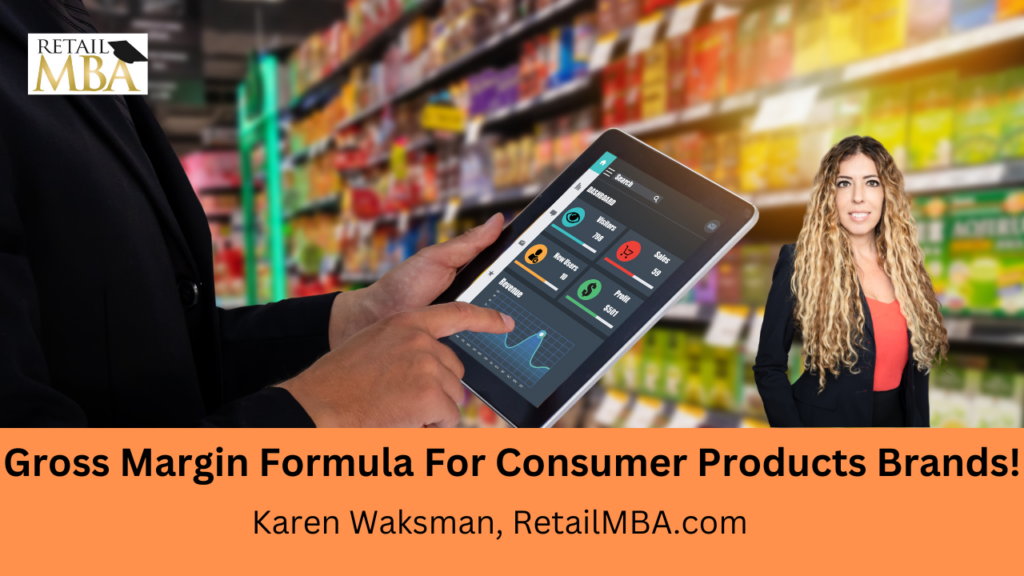Gross Margin Formula – Gross Margin Formula for Consumer Products Brands!
In this short video training, we will discuss gross margins and how they impact working with chain stores. When dealing with chain stores, pricing and the cost of goods sold play a significant role in determining the success of your product. Understanding gross margin is crucial in navigating these complexities and ensuring a profitable partnership with retailers.
What is Gross Margin?
Gross margin is the total revenue you receive from your product minus the total cost of goods sold. It represents the profit you make after accounting for all the costs associated with producing and selling your product. There are two perspectives to consider when looking at gross margin: the vendor side (your side) and the retailer side.
Vendor Perspective
From the vendor perspective, calculating gross margin is relatively straightforward. You simply subtract the total costs from the total revenue to determine your profit on a per-unit basis. This information is essential for understanding your profitability and setting appropriate pricing for your product.
Retailer Perspective
From the retailer perspective, gross margin expectations can vary depending on the type of retailer and the product category. Each retailer has its own specific requirements and expectations when it comes to gross margin. For example, a low-price leader like Walmart will have different expectations compared to a retailer like Neiman Marcus.
Understanding the ideal gross margin for a retailer in your product category can make your life easier when it comes to pricing and negotiations. To determine the specific retailer’s margin requirements for your product category, you can join a trade association related to your product category. These associations are already selling to the retailers you want to target and can provide valuable insights into ideal margins.
Volume Discounts and Negotiations
When negotiating with chain stores, volume discounts can play a significant role in determining the gross margin. Retailers often look for great deals when buying large quantities of a product. To leverage this, you can discuss volume discounts with your manufacturer. Find out what discounts they can offer if the retailer buys a certain quantity of your product. This negotiation tactic can help you achieve the buyer’s ideal gross margin.
Cost of Goods Sold and Manufacturing
Your cost of goods sold (COGS) includes all the expenses associated with producing and packaging your product. Finding a cheaper manufacturer or packaging option can help lower your COGS and, in turn, improve your gross margin. By reducing your costs, you can offer a more competitive price to the retailer and increase your profitability.
Shipping and Distribution Costs
When working with chain stores, you need to factor in shipping and distribution costs. If you can negotiate with the retailer to cover these costs or find a more cost-effective shipping solution, it can positively impact your gross margin. Conversely, if you have to bear the shipping costs, it will affect your profitability and the overall gross margin.
Private Label vs. Branded Products
Selling to chain stores can be done through private label or branded products. Private label products are sold under the retailer’s brand name and are typically priced lower than branded products. This pricing strategy can impact your gross margin, as you may need to sell at a lower price to accommodate the retailer’s private label requirements. On the other hand, selling branded products allows you to maintain higher pricing and potentially achieve a better gross margin. The decision between private label and branded products is a business decision that should be carefully considered based on your specific circumstances.
Inventory Management and Promotions
Effective inventory management is crucial in maintaining a healthy gross margin. Overstocking or understocking can lead to unnecessary costs or missed sales opportunities. Additionally, promotions and markdowns requested by the retailer can impact your gross margin. While these promotions may attract more customers, they can also reduce your profit margin. It’s important to carefully evaluate the impact of promotions on your overall profitability.
Slotting Fees and Cooperative Advertising
Chain stores may charge slotting fees for placing your product in a specific location on their store shelves. These fees can impact your gross margin, as they add to your overall costs. Cooperative advertising, where you contribute to the retailer’s advertising efforts, can also affect your gross margin. It’s important to consider these additional costs when calculating your profitability.
Conclusion
Understanding gross margin is essential for successfully working with chain stores. By considering factors such as pricing, cost of goods sold, volume discounts, shipping costs, private label vs. branded products, inventory management, promotions, and additional fees, you can navigate the complexities of the retail industry and establish a profitable relationship with retailers. Remember to research your specific product category and join trade associations to gain valuable insights into ideal margins. With a clear understanding of gross margin, you can make informed decisions and maximize your revenue potential.
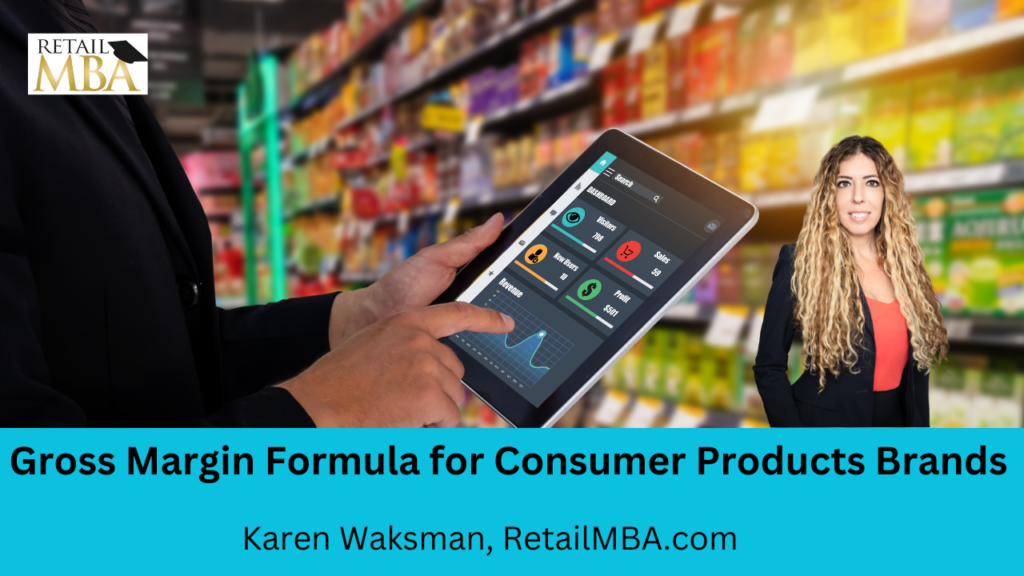
Here are a few other blog posts you might be interested in:
Step-by-step training on how to sell to retail chains!
We explain exactly how to do that and how to get started today. I’ve taught over 100,000 of companies over the years across the globe on how to get your products to the stores. And so we’re here to support you. Or please subscribe to our Youtube channel and or be on the lookout for additional training that we create.
We are here to expedite the process of generating revenue with your physical products and that’s what we’re all about. Take a look at our advanced training, live events, certification programs and so much more.
In this training, I will discuss some of the things to think about when approaching a retailer to sell your products and become a vendor. Hope it helps! 🙂
Karen Waksman,
Retail MBA
Questions? Contact Us!
1-855-Retail-2 (Call or Text)
Email: info@retailmba.com
Retail MBA provides a step-by-step formula on How to Sell to Major Retailers, Online Retailers, Smaller Retailers, Catalogs and More. No Experience Required! These solutions continue to convert for clients year-over-year! These are Time-Tested and Proven Strategies that we utilize ourselves when going after stores! Everything we teach, we test. Want access to these formulas? ANY one of our programs and coaching systems gives you access to them now. With that said…
Here are 5 Easy Ways to Work with Us:
1) Free Training – If You Would Like to Join Our Next FREE Webinar Training Called “Retail Chain Store Secrets – How to Sell to Major Retail Chains. No Experience Required” Then Sign Up NOW To Learn All About Selling into Retail Chains By Clicking Here!
2) Retail MBA Year Long Coaching and Training System – Our Year Long Coaching and Training System with Karen Waksman is POWERFUL! This is our most popular training and coaching system! We walk you through how to approach, pitch and sell to retail chains and we coach you along the way! Join us by Clicking Here!
3) Masterclass Intensives – Want to Join our Next 4 Week Elite Retail MBA Masterclass Intensive? These Intensives Are EPIC for people who Love Fast Paced Learning – Homework, Retail Coaching, Developing Your Strategy, Buyers Contacts and More! These Events Are Held Every Quarter. Join us by Clicking Here!
4) Done-for-You Program – If You Want Karen Waksman and Her Team to Reach Out to Your Top Dream Retail Chains On Your Behalf – And You Have a Retail-Ready Product, Check Out our Epic Done-For-You Service by Clicking Here!
5) In Person Events – If You Want to Learn LIVE and Meet Karen Waksman in Person at Our Next “America’s Next Retail Product: LIVE Event with Other Like-Minded Individuals in Beautiful San Diego, CA! We Would LOVE to Have You Join Us by Clicking Here!

Check Out Our Additional Blog Posts Here:
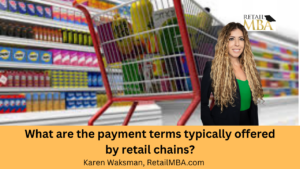
Retail Terms
Retail Terms – What are the payment terms typically offered by retail chains? Click Here to Learn More!
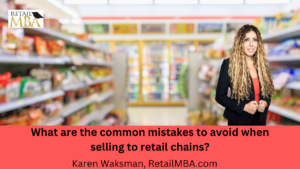
Retail Vendor
Retail Vendor – What are the common mistakes to avoid when selling to retail chains? Click Here to Learn More!
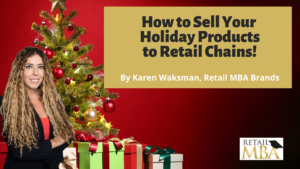
How to Sell Your Holiday Products to Retail Chains
New Training on How to Sell Your Holiday Products to Retail Chains
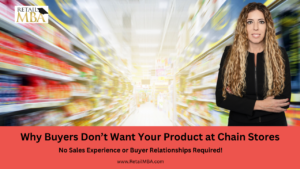
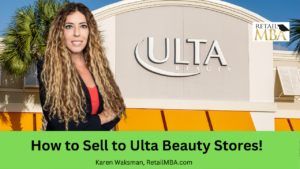
Ulta Beauty Vendor
Ulta Beauty Vendor – How to Sell to Ulta Beauty Stores. Click Here to Learn More!
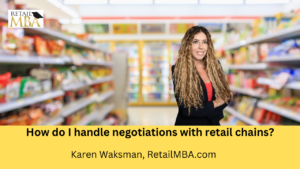
Retail Strategy
Retail Strategy – How do I handle negotiations with retail chains? Click Here to Learn More!

